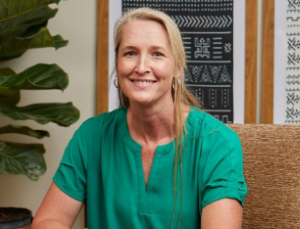The good news for retailers is that more workers are being vaccinated, meaning they can return to work soon
HO CHI MINH CITY, Vietnam — Hopes of Vietnam restarting its manufacturing economy — including most furniture production — by Sept. 15 have been dashed as it appears the government here has extended its lockdown order until Sept. 30.
The good news is that as more people have been getting vaccinated for Covid-19, the government has been letting them return to work within about 14 days of their first shot. As that happens, more workers are getting back in the production line to produce finished goods including furniture for retailers whose customers are still clamoring for product.
As of Sept. 14, various agencies estimate that more than 26% of the population in Vietnam was fully vaccinated, compared to about 6% who received the first dose. These figures are said to be higher in the Ho Chi Minh City area, where most furniture for the U.S. market is produced. There, more than 50% of the population was been said to have received a first dose by the second week of September.
By Sept. 15, the Ho Chi Minh City area government reportedly began allowing people in certain districts to move around more freely, meaning they can leave their homes at least once a week for groceries or to get vaccinated. Some workers have stayed at factories 24/7, working, eating and sleeping on the premises, thus allowing those factories to remain open.
Yet in many cases, this effort has failed as so many workers working and living so close together proved to be a breeding ground for Covid-19. This forced many plants to be placed on lockdown even if they reported just a few cases of infected workers.
“There was a boomerang effect with some of the major factories,” said Lao Holmes, who oversees global sourcing at Riverside Furniture. “They didn’t test the people who were working there and crammed them into places to work, eat and sleep and guess what? The virus spread like wildfire.”
Workers who are vaccinated and tested for the virus also can be bussed in from their homes to work. Yet even in those situations, factories are still working at a reduced capacity due to having only a fraction of their employees on the premises.
Thomas Luk, president of case goods and upholstery manufacturer Starwood Furniture, told Home News Now that as of Sept. 12, the company had about 300 of its 1,900 workers working on partially completed production on a daily basis.
He added that the company was able to ship completed products during the lockdown period, including market samples, which shipped the first week of August.
All 300 workers have received the first dose of the vaccine, and 25% have received a second dose, he said. In addition, he noted, the government is allowing all workers who have been vaccinated with the first dose to return to work in 14 days.
“This is a positive sign,” he said. “It will be a gradual process for reopening. Oct. 1 for a complete reopening seems to be realistic now.”
He expected another 600 workers to return Sept. 16 with more expected to return by the end of September.
“We are not sure how long it will take for all our 1,900 workers to come back to work even after the lockdown is fully lifted in October since some of the workers went back to their home towns in the countryside,” Luk said.
Harvey Dondero, chairman of case goods manufacturer H. Nicolas & Co., agreed that any lifting of the shutdown — along with people getting back to work — will depend on how quickly people get vaccinated.
Today, he said, his factory is operating on about 75% capacity. Any plans to increase that, he said, will depend on vaccinations proceeding as soon as possible.
At this point, however, he said it is still unclear when the government will reopen manufacturing throughout the region. For example, what happens in outlying provinces such as Binh Duong or Dong Nai may be different than what happens in the core HCMC or Hanoi metro areas.
“There is discussion and a loose, but unclear program to allow people to go outside their homes, basically to grocery shop, so this is what you are hearing is re-opening,” he said. “This lock down is very strict, so any activity allowed outside one’s home is a big deal to people…The good news is that the government is focusing on vaccinations as a first step.”
While he was not overly optimistic about the country reopening in early October — in fact some others interviewed for this story didn’t expect that to happen until mid-October — he remains hopeful the Vietnam furniture industry eventually will get back on its feet.
“We can hope for the best in furniture, which is not an easy manufacturing process and is, even in the big factories, labor intensive,” he said. “And the supply chains get broken very quickly,” he said.
Those with a good supply of raw materials will likely be in good shape initially. However, those materials on hand won’t last indefinitely. Thus, the ability for subcontractors and other suppliers of raw materials to restart operations will impact how quickly Vietnam’s furniture sector rebounds.
Ed Teplitz, president of Theodore Alexander USA, estimated that the company’s Vietnam manufacturing facilities were working at about 30-40% capacity just before the Sept. 13-14 Premarket. The hope is that the figure continues to improve as more people get vaccinated. Yet Teplitz, too, is concerned about the flow or raw materials.
“Even as we bring people in (to work), it is still hard getting raw materials,” he said in reference to the shutdown affecting subcontractors and materials suppliers. “That has been going on since the beginning of August. It is hard to get everything, and with people not working, it makes it that much more difficult.”
Ashley Furniture also has hinted of challenges in the weeks and months ahead. Recently, it sent a letter to retailers saying that due to supply chain challenges in Vietnam and Malaysia, it will temporarily suspend production of a number of SKUs in order to focus on its bestselling groups.
The company said it has inventory on the suspended SKUs and will use all remaining inventory to fill open orders as soon as possible. However, it noted it will soon move the request dates on all new orders for these products to May 1, 2020.
Like others, the company is keeping a close eye on the situation overseas, including how Vietnam moves forward with its vaccinations
“We continue to see improvement throughout Asia in response to the resurgence of Covid-19 with access and availability to vaccines growing,” Ashley CEO Todd Wanek said in the letter. “We are also following updated guidance from authorities in the region on how to best respond to and manage Covid-19 within manufacturing facilities. We believe this will help to shorten and reduce the impact of the current disruptions.”
Another major manufacturer told Home News Now that, “While some cities have relaxed the lockdown, we don’t expect businesses in our area to be back to work until late September at best. The number of daily cases remains high here, and vaccines just started to roll out in the surrounding communities. During this down-time period, we continue to plan how best to keep our staff safe when we do return. While we are anxious to return to work, the health and safety of our team is a priority.”
This source added that while the company continued to ship inventory through mid-August and is producing samples with reduced staff, “production plans can only be reset when we know a return date, how many team members will return when re-opening, and how fast our key raw materials suppliers are able to get back to speed. We have provided our best estimations to our customers so they have some idea what the future may look like. Hopefully, we will have more clarity before going to October market.”
Importers who discussed the issue with Home News Now during Premarket also said they hope to have more information coming into market.
While some are hopeful their source factories can begin shipping before the end of the year, others were concerned that some shipments — perhaps many shipments — may not occur until after Chinese New Year.
That said, many are already getting in line for those shipments, including major retailers around the U.S., who buy in full container loads or full truckloads.
Anyone else could have to wait even longer. How long that might be remains the biggest unknown.





